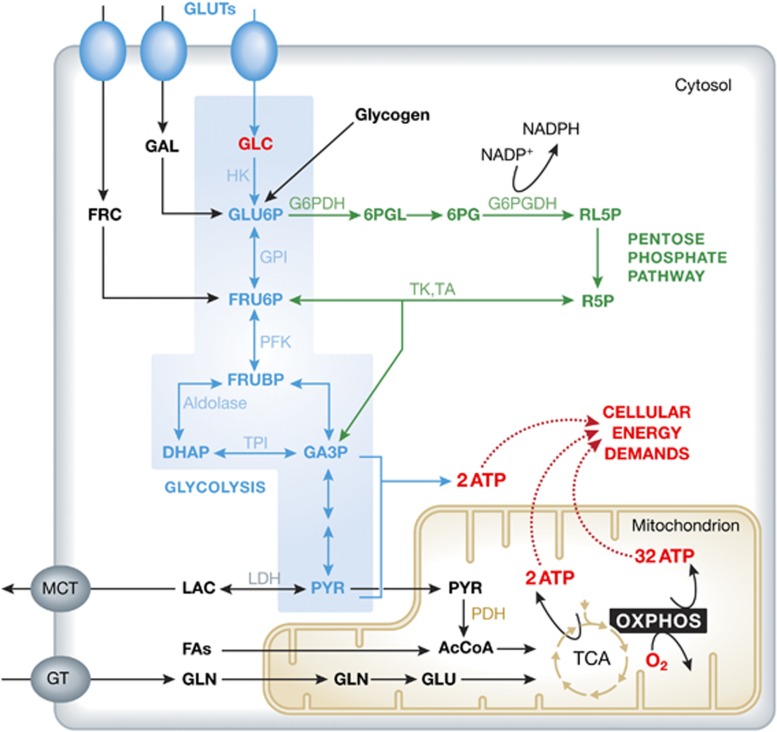Figure 1.

Energy metabolism in a typical mammalian cell. To meet cellular energy demands, ATP is generated by the glycolysis pathway (blue), the tricarboxylic acid (TCA) cycle and the oxidative phosphorylation (OXPHOS) system. The main energy substrate glucose (GLC) enters the cell via GLC transporters (GLUTs) and is converted into pyruvate (PYR). Alternatively, surplus GLC can be stored as glycogen for later use or enter the pentose phosphate pathway (green). PYR can have two different fates: either it is converted into lactate (LAC) that leaves the cell, or it enters the mitochondrion (yellow) to form Acetyl coenzyme A (AcCoA). The latter is processed by the TCA cycle to yield NADH and FADH2, which are substrates of the OXPHOS system. In addition to GLC also fructose (FRC), galactose (GAL), fatty acids (FAs) and glutamine (GLN) can enter the ATP producing system (see text for details). 6PG, 6-phosphogluconate; 6PGL, 6-phosphogluconolactone; DHAP, dihydroxyacetone phosphate; FRU6P, fructose 6-phosphate; FRUBP, fructose 1,6-bisphosphate; GA3P, glyceraldehyde 3-phosphate; GLU, glutamate; G6PDH, glucose 6-phosphate dehydrogenase; G6PGDH, 6-phosphogluconate dehydrogenase; GT, glutamine transporter; GPI, phosphoglycose isomerase; HK, hexokinase; LDH, lactate dehydrogenase; MCT, monocarboxylate transporter; PDH, pyruvate dehydrogenase; PFK, phospofructokinase; RL5P, ribulose 5-phosphate; R5P, ribose 5-phosphate; TA, transaldolase; TK, transketolase; TPI, triosephosphate isomerase.
